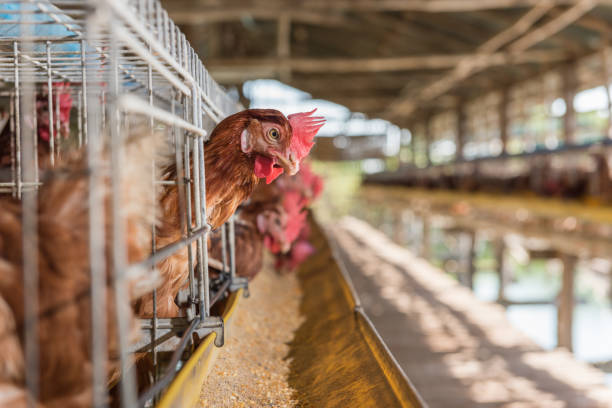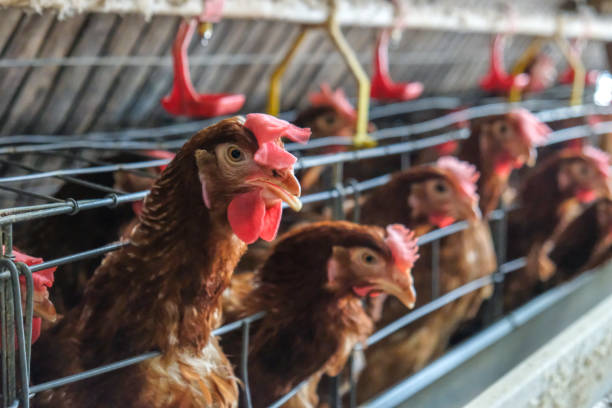
India Layer Cage Price: Factors Affecting Your Investment
India Layer Cage Price: Factors Affecting Your Investment
Investing in layer cages for egg production in India can be a game-changer for poultry farmers. However, understanding the price dynamics is crucial to making informed decisions and maximizing your return on investment. This article dives deep into the various factors that influence layer cage prices in India, providing you with the knowledge needed to navigate the market and secure the best possible deal.
**Understanding the Indian Layer Cage Market**
The Indian poultry industry is booming, and with it, the demand for efficient and effective layer cage systems. The market is diverse, with numerous manufacturers and suppliers offering a range of options to suit different farm sizes and budgets. Before delving into specific price factors, it’s important to understand the landscape. You’ll find everything from basic, locally produced cages to advanced, automated systems imported from abroad. The price difference between these extremes can be significant, highlighting the need for careful consideration.
**Key Factors Influencing Layer Cage Prices**
Several key elements play a role in determining the final price of layer cages. These factors can be broadly categorized into material costs, manufacturing processes, cage design, automation level, supplier reputation, and installation costs. Let’s explore each of these in detail.
**1. Material Quality and Type**
The materials used in constructing layer cages are a fundamental price driver. The vast majority of layer cages are made of galvanized steel, renowned for its strength and protection against rust. The cost of steel fluctuates globally, directly impacting cage prices.
* **Galvanization:** The level of galvanization—whether it’s hot-dip galvanization or electro-galvanization—also affects the cost. Hot-dip galvanization offers superior protection against corrosion and hence, commands a higher price.
* **Wire Gauge:** The thickness of the wire used in the cages is also a factor. Thicker, heavier-gauge wire provides greater durability and can withstand the wear and tear of daily use, resulting in a more expensive, longer-lasting cage.
* **Other Materials:** Components like feeders, drinkers, and manure removal systems can be made from different plastics or metals. The quality and type of these materials contribute to the overall price. High-quality plastics that are resistant to UV damage and cracking will typically increase the cost but also provide better long-term performance.
**2. Cage Design and Dimensions**
The design and dimensions of the layer cages directly impact the number of birds that can be housed per unit, thus influencing their price.
* **Tier System:** Layer cages are typically arranged in tiers – single, double, triple, or even more. More tiers allow for a greater density of birds per square foot of floor space, and the complexity of the structure can raise the cage price.
* **Cage Size and Layout:** The size of each individual cage and the overall layout affect both the material usage and the efficiency of egg collection and bird management. Cages designed to minimize egg breakage or improve bird comfort may cost more.
* **Customization:** Customized cage designs tailored to specific farm layouts or needs will typically be more expensive than standard, off-the-shelf options.
**3. Automation Level**
The level of automation incorporated into the layer cage system is a major price determinant. Automated systems significantly reduce labor costs and improve efficiency, but they come with a higher upfront investment.
* **Automated Feeding Systems:** These systems automatically distribute feed to each cage, ensuring consistent and even feeding. They range from simple mechanical feeders to advanced computerized systems that can adjust feed quantities based on bird age and production levels.
* **Automated Drinking Systems:** Nipple drinkers are commonplace in modern layer cages. Automated systems with water filtration and medication dispensing capabilities further add to the cost.
* **Automated Manure Removal:** Removing manure is a labor-intensive task. Automated manure scrapers or belt systems greatly simplify this process, reducing labor costs and improving hygiene. The type and complexity of the manure removal system directly impact the price.
* **Automated Egg Collection:** Automated egg collection systems, typically using conveyor belts, gently transport eggs from the cages to a central collection point, minimizing breakage and labor. These systems are a significant investment but can greatly improve the efficiency of larger operations.
* **Environmental Control Systems:** Modern layer farms often incorporate environmental control systems to regulate temperature, humidity, and ventilation. These systems can be integrated with the cage system, adding to the overall price but improving bird welfare and productivity.
**4. Manufacturing Quality and Brand Reputation**
The manufacturing quality and the reputation of the supplier or manufacturer also influence the layer cage price.
* **Manufacturing Standards:** Cages manufactured to higher standards, with precise welds, smooth edges, and durable finishes, will generally cost more. However, they will also provide better performance and a longer lifespan.
* **Brand Reputation:** Established brands with a proven track record of quality and reliability often command a premium price. This is due to the assurance of quality, durability, and after-sales service that comes with a reputable brand.
* **Certifications:** Cages that meet international quality standards (like ISO certifications) or animal welfare standards may be priced higher.
**5. Transportation and Installation Costs**
These costs are often overlooked but can significantly impact the total investment.
* **Distance:** The distance between the manufacturer and your farm will affect transportation costs. Sourcing cages from local manufacturers can potentially save on these expenses.
* **Installation Complexity:** The complexity of the installation process can impact labor costs. Automated systems typically require more skilled technicians for installation and setup.
* **Site Preparation:** Ensure your poultry house is ready for the cage system. Any necessary site preparation, such as levelling the floor or reinforcing the structure, will add to the total cost.
**6. After-Sales Service and Warranty**
The availability of after-sales service and the length of the warranty period are important considerations.
* **Warranty:** A longer warranty period indicates the manufacturer’s confidence in their product and provides peace of mind for the buyer.
* **Spare Parts Availability:** Ensure that spare parts are readily available in India. This will minimize downtime in case of repairs or replacements.
* **Technical Support:** Access to responsive technical support can be invaluable, especially during the initial setup and operation of the layer cage system.
**7. Market Dynamics and Competition**
Market forces and competition among suppliers also play a role in pricing.
* **Supply and Demand:** High demand for layer cages can drive up prices, while periods of lower demand may lead to price reductions.
* **Competition:** A competitive market with multiple suppliers can result in more favorable pricing.

* **Government Subsidies:** Government programs and subsidies aimed at supporting the poultry industry can also impact the price of layer cages. Keep an eye out for any available incentives that can help offset your investment costs.
**How to Make an Informed Decision**
Now that you understand the factors influencing layer cage prices, here’s how to make an informed decision:

1. **Assess Your Needs:** Determine the size of your operation, your budget, and your desired level of automation.
2. **Research Suppliers:** Get quotes from multiple suppliers, comparing prices, features, and warranties.
3. **Visit Existing Farms:** If possible, visit poultry farms that are using the layer cage systems you are considering. This can provide valuable insights into their performance and durability.
4. **Read Reviews and Testimonials:** Look for online reviews and testimonials from other poultry farmers who have used the same cages.
5. **Consider the Long-Term Costs:** Don’t just focus on the upfront price. Consider the long-term costs, such as maintenance, repairs, and energy consumption.
6. **Negotiate:** Don’t be afraid to negotiate with suppliers to get the best possible price.
7. **Read the Fine Print:** Before signing any contract, carefully read the terms and conditions, including the warranty, payment schedule, and delivery timeframe.
**Cost-Effective Solutions**

While advanced, automated systems can offer significant benefits, there are also cost-effective solutions available for smaller-scale farmers:
* **Locally Manufactured Cages:** Sourcing cages from local manufacturers can often be more affordable.
* **Used Cages:** Consider purchasing used layer cages in good condition. This can be a significant cost-saving measure. Be sure to inspect them carefully before purchasing.
* **DIY Options:** For very small-scale operations, building your own cages can be a viable option. However, this requires careful planning and construction to ensure bird welfare and egg production efficiency.
**The Importance of Quality over Price**
While price is certainly an important consideration, it’s crucial to prioritize quality. Investing in poorly constructed cages can lead to bird injuries, increased mortality rates, and lower egg production. This can ultimately negate any initial cost savings. Choose cages that are well-designed, durable, and easy to clean and maintain.
**Conclusion**
Understanding the different factors that contribute to layer cage prices in India is essential for making a smart investment. By considering material quality, cage design, automation level, supplier reputation, and installation costs, you can make an informed decision that optimizes your poultry farm’s efficiency and profitability. Remember to assess your specific needs, research suppliers thoroughly, and prioritize quality over price to ensure a successful and sustainable egg production operation. Choosing wisely is not just about saving money initially; it’s about ensuring long-term profitability and the well-being of your flock.
